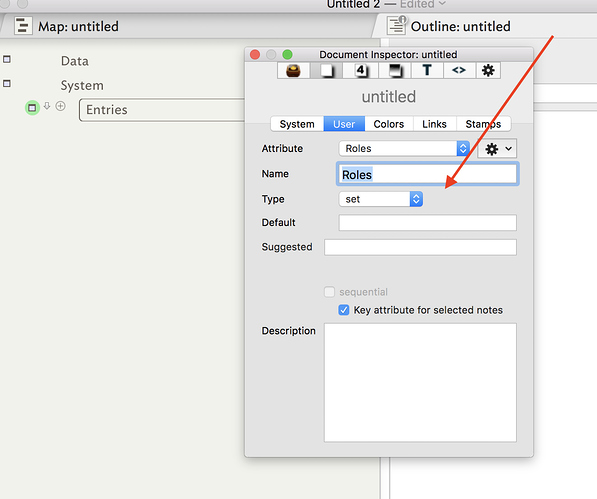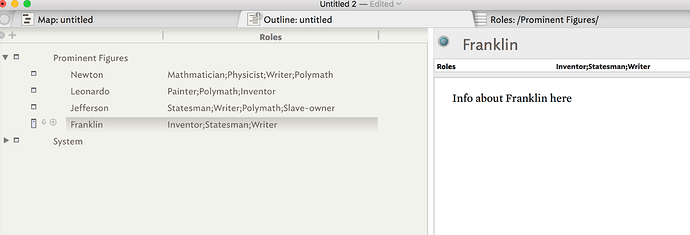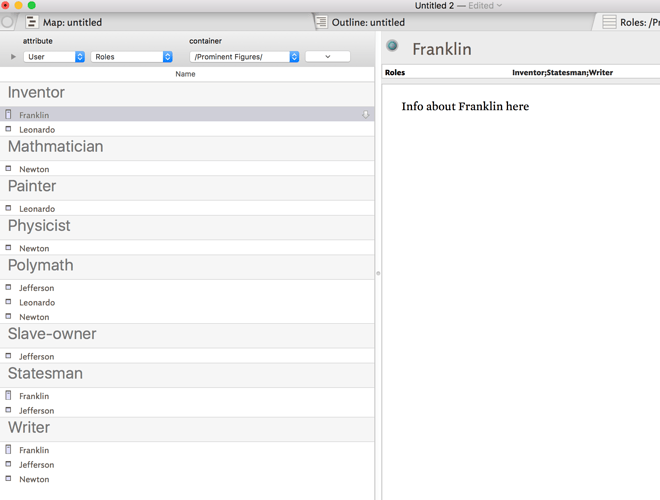I think you’d be best off using a Set-type attribute. Sets are list that automatically de-dupe, i.e. each note can only hold one entry for that value. IOW, someone can be an 'physicist and ‘astronomer’ but neither of those more than once. In a List-type, the term ‘physicist’ could occur twice. Thus, in non-techie terms a Set is a de-duping List although both are ‘lists’, i.e. attribute that allow more than one discrete value per note. By contrast, a String attribute allows one value.
So if you set an attribute with the value ‘physicist’, depending on the data type the result is:
- String: “physicist”
- Set: “physicist”
- List: “physicist”
Now set the value to ‘astronomer’ and the result is
- String: “astronomer”
- Set: “physicist;astronomer”
- List: “physicist;astronomer”
The ‘;’ in the set and List is how this is displayed in Key attributes - the semi-colon is the value delimiter. Now is we set the value ‘physicist’ again we get:
- String: “physicist”
- Set: “physicist;astronomer”
- List: “physicist;astronomer;physicist”
Note how the Set de-dupes the result.




